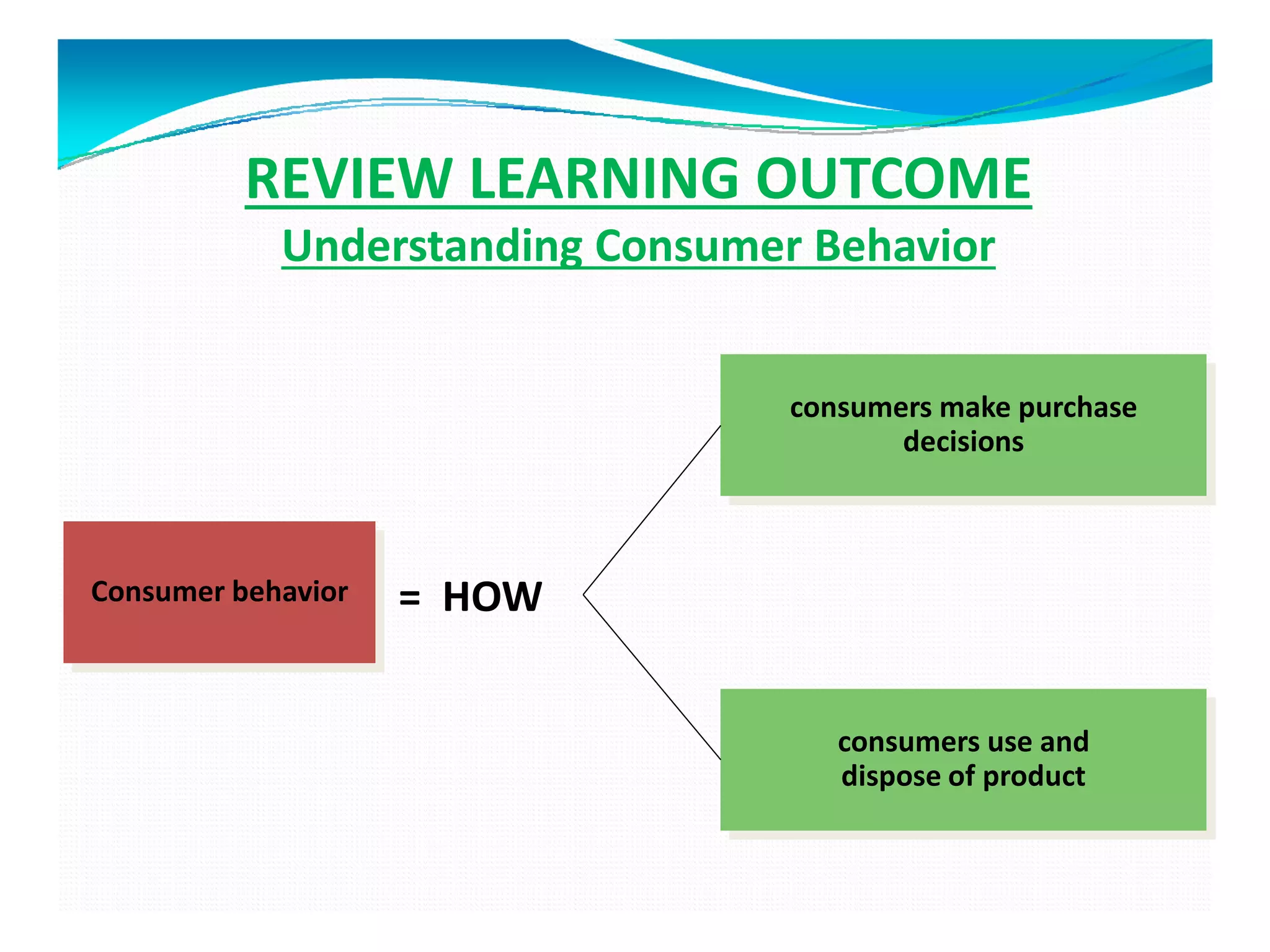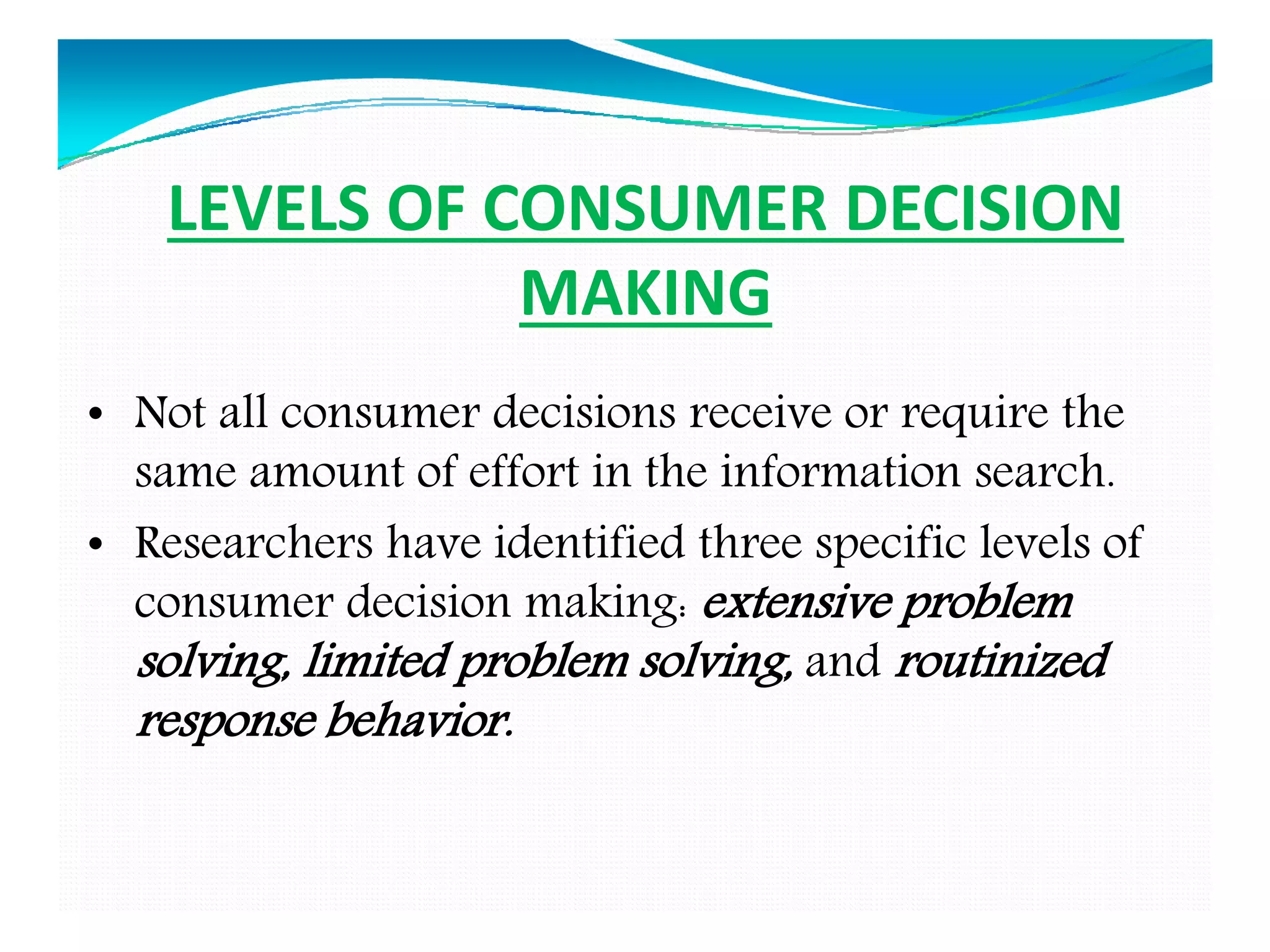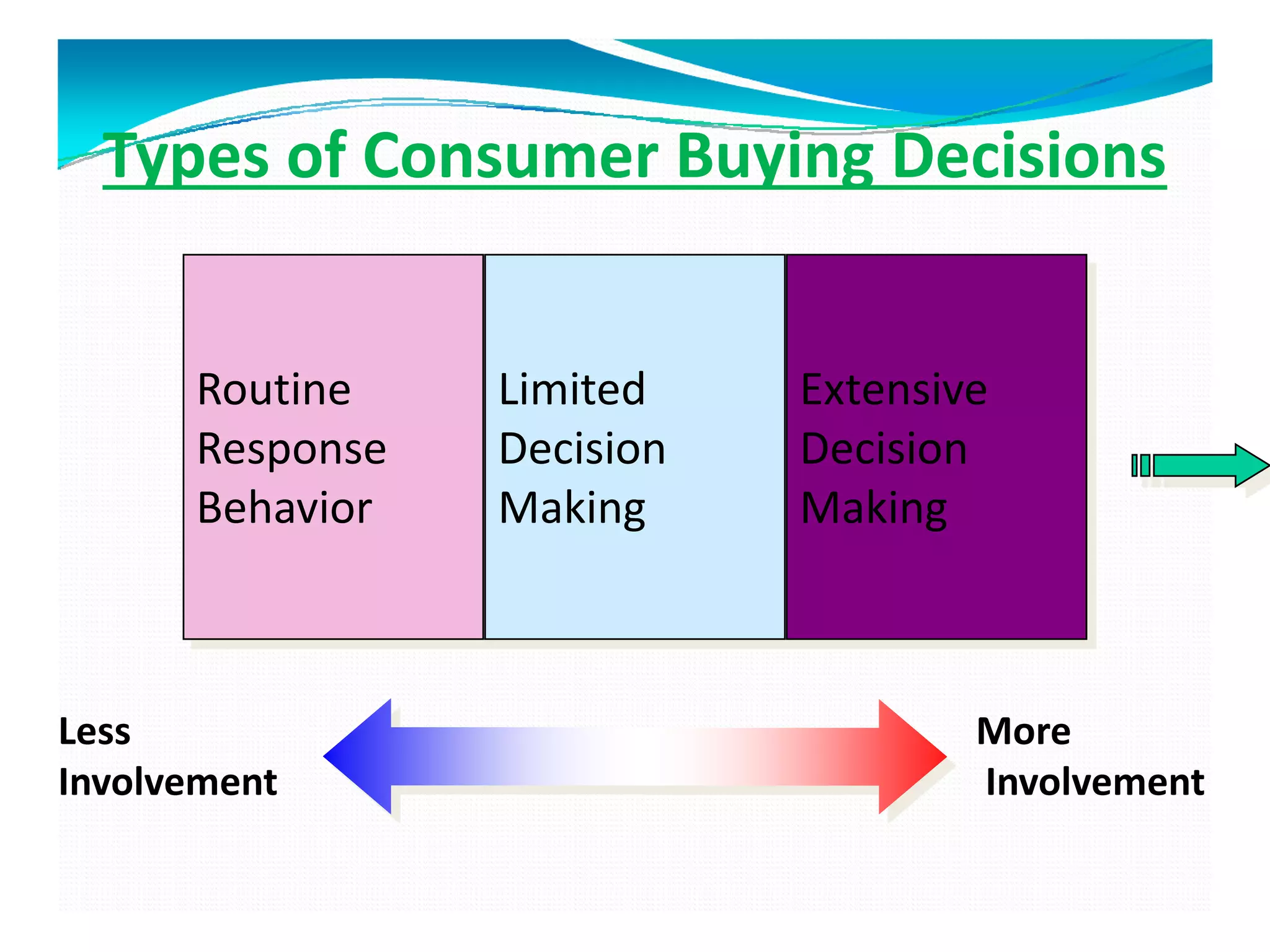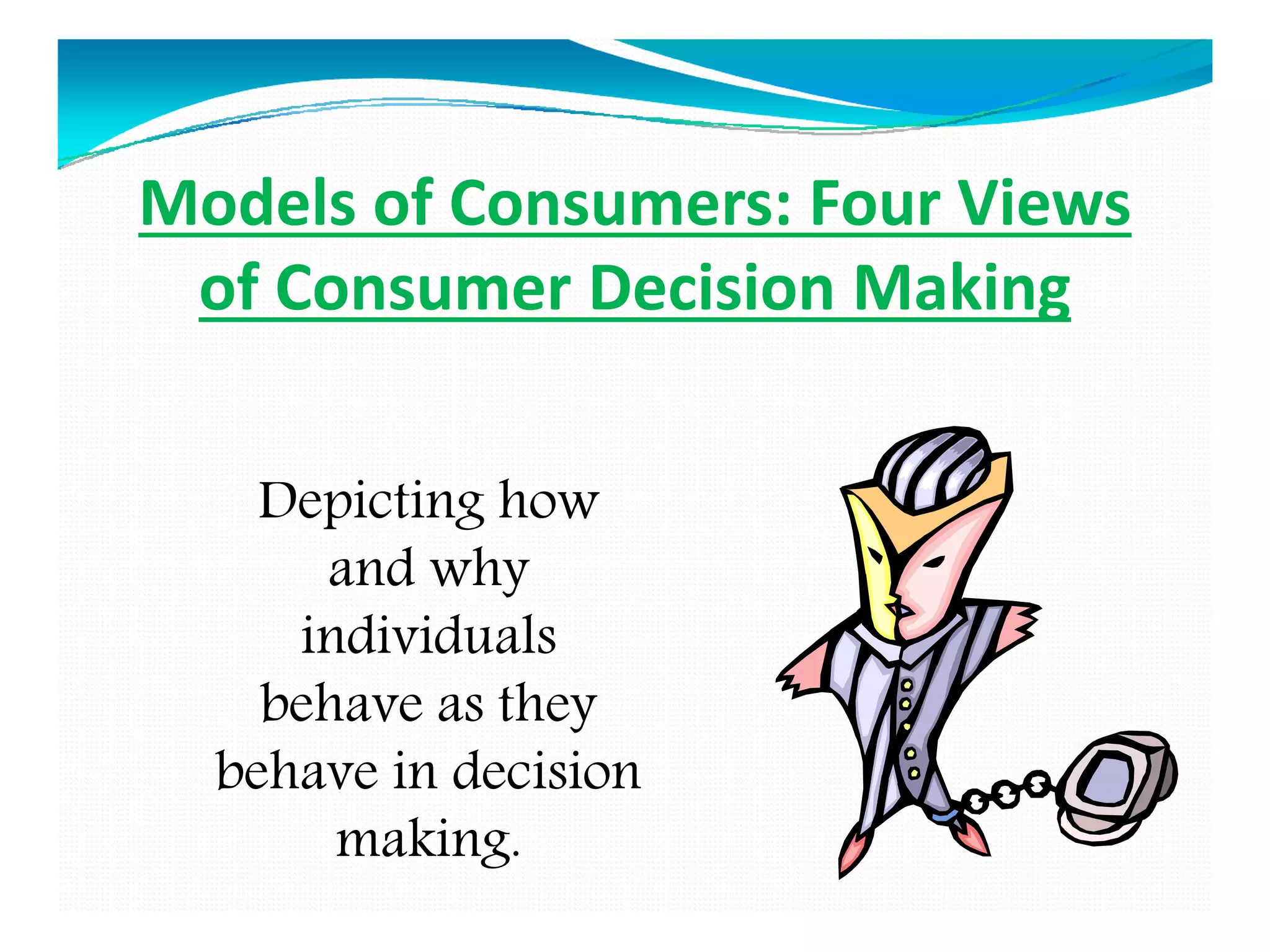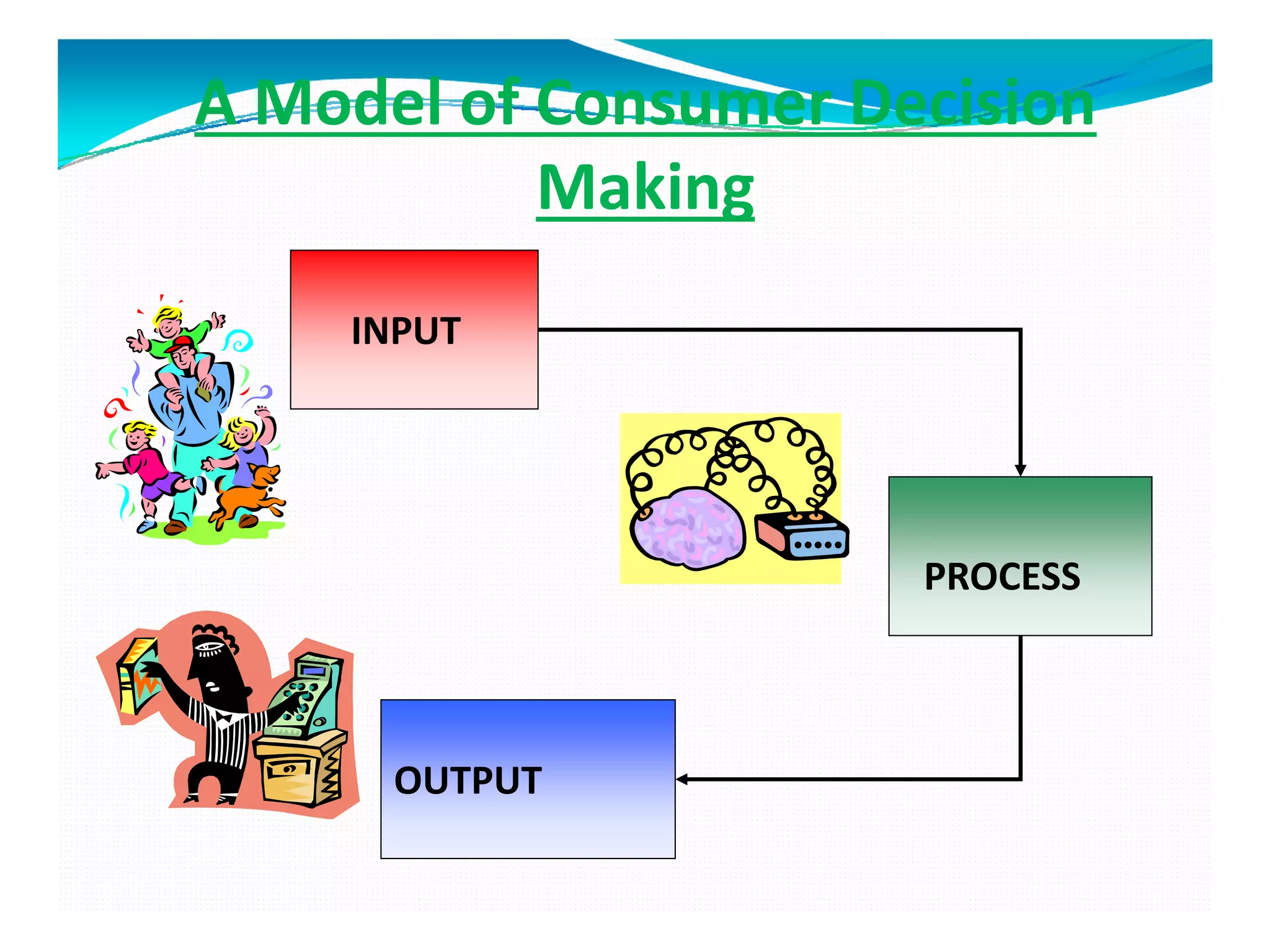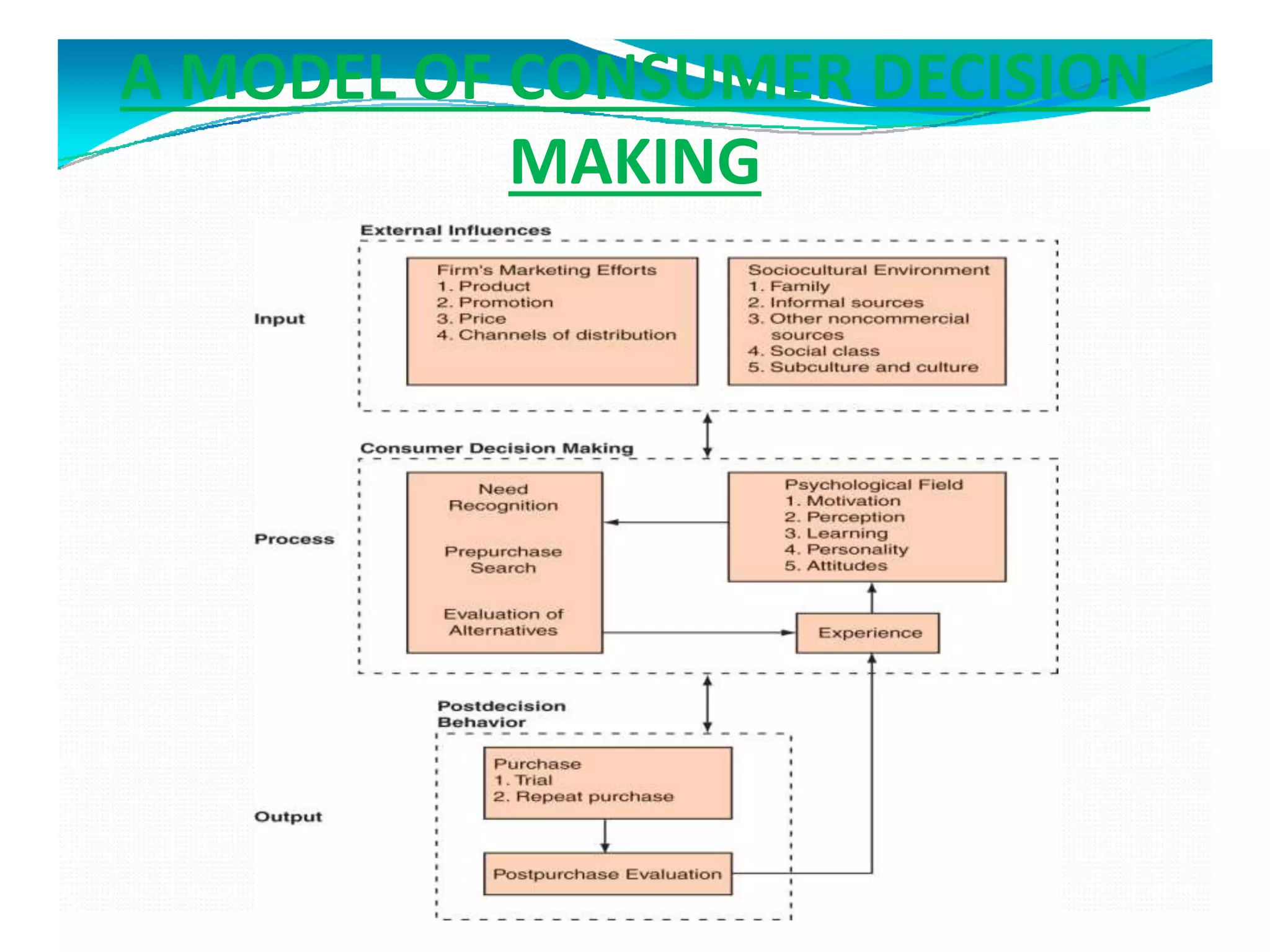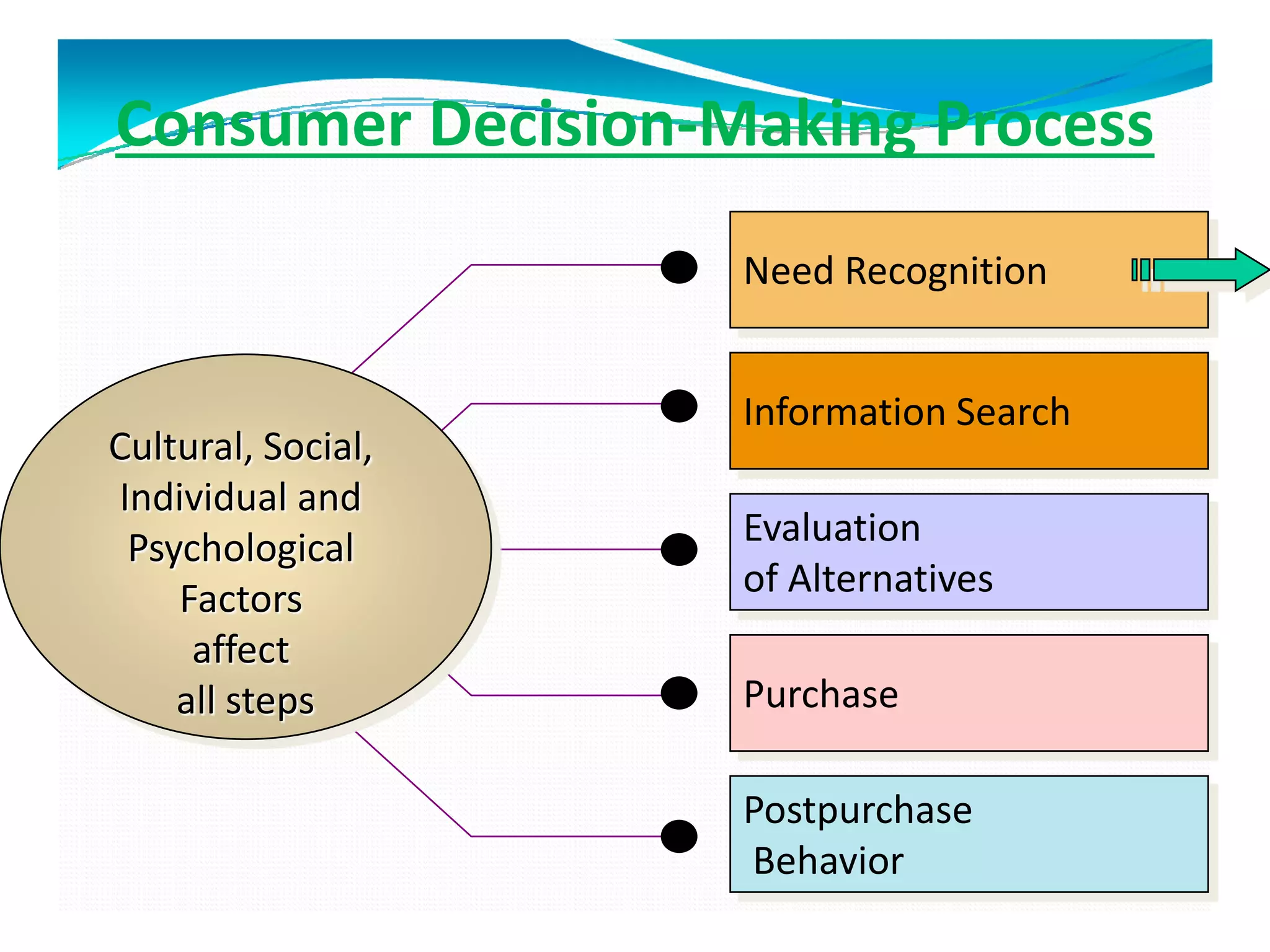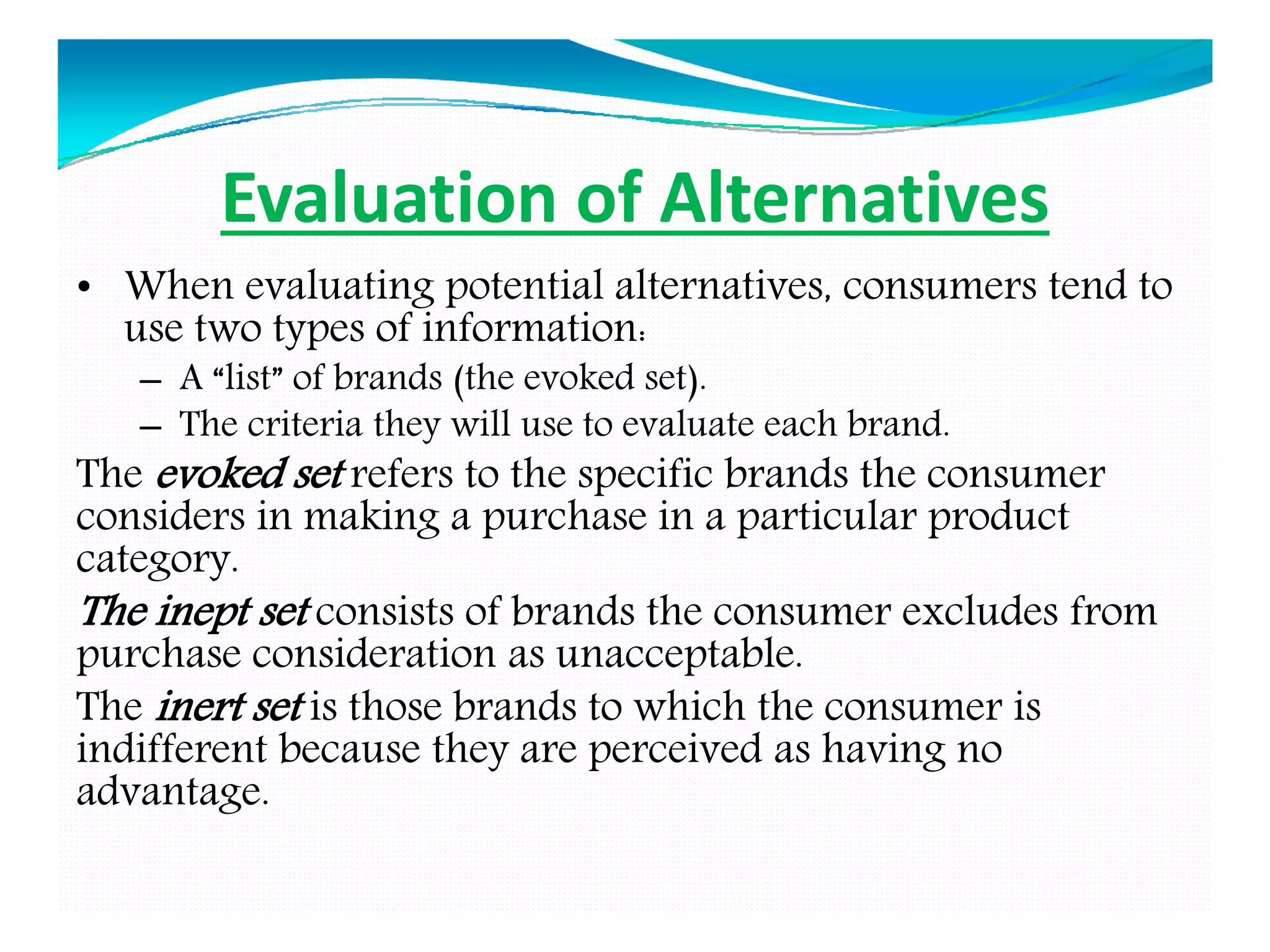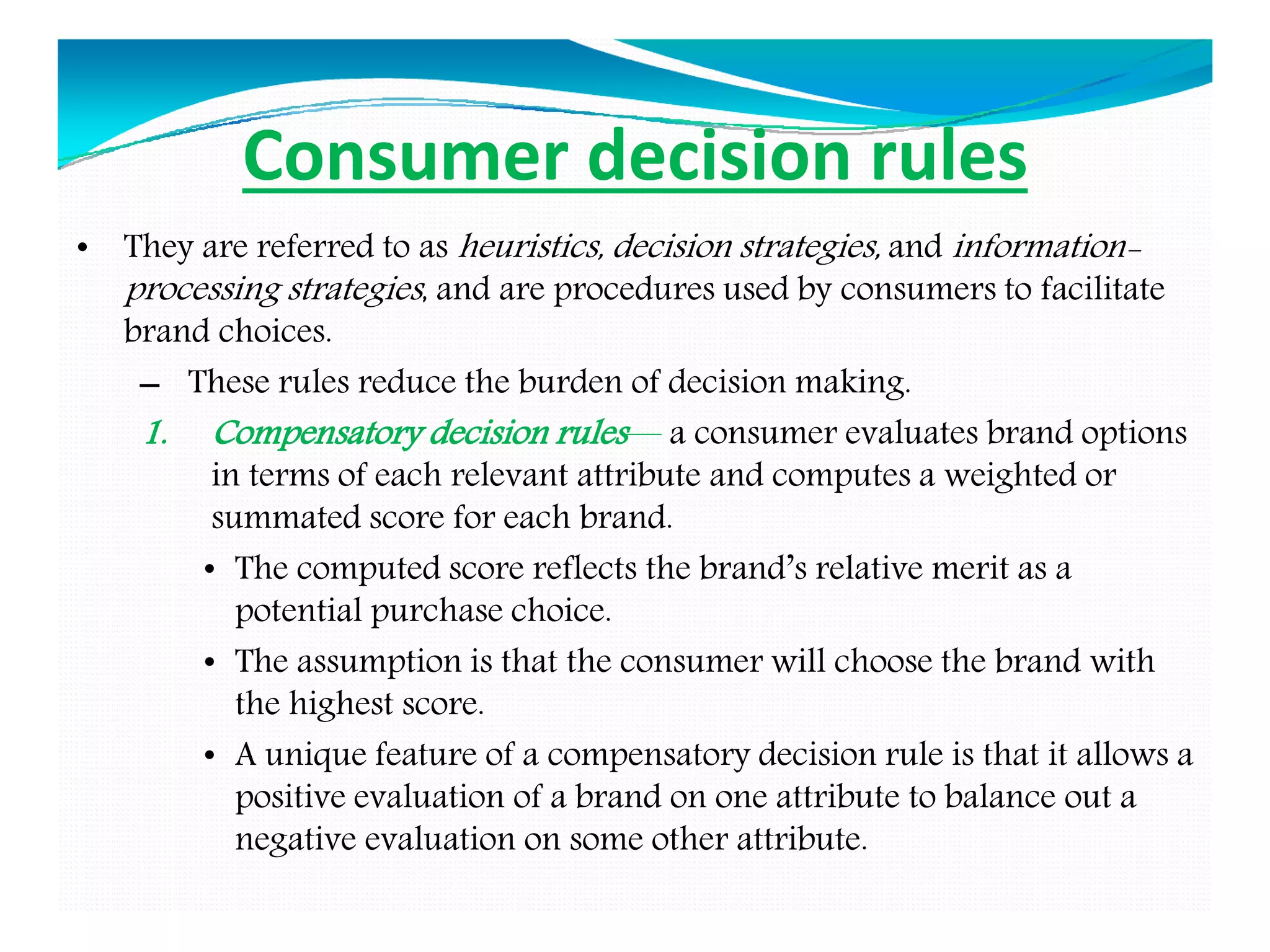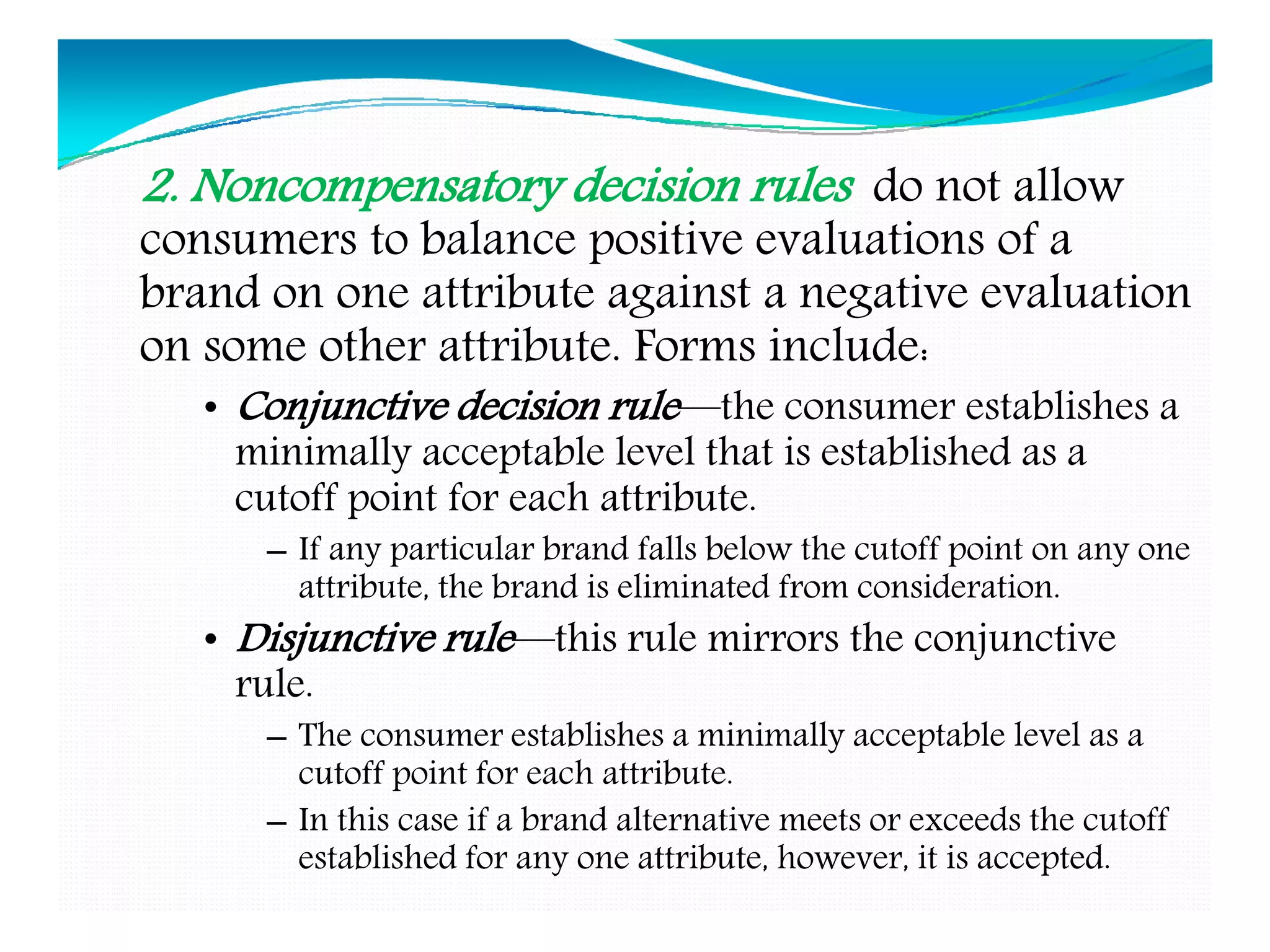The document outlines the consumer decision-making process, highlighting factors that influence how consumers identify needs, search for information, evaluate alternatives, and make purchases. It categorizes decision-making into levels such as extensive problem solving, limited problem solving, and routinized response behavior, while also discussing various models of consumer behavior including economic, passive, cognitive, and emotional views. Additionally, it addresses postpurchase behavior and factors affecting consumer involvement, ultimately aiming to enhance consumer satisfaction with purchasing decisions.


